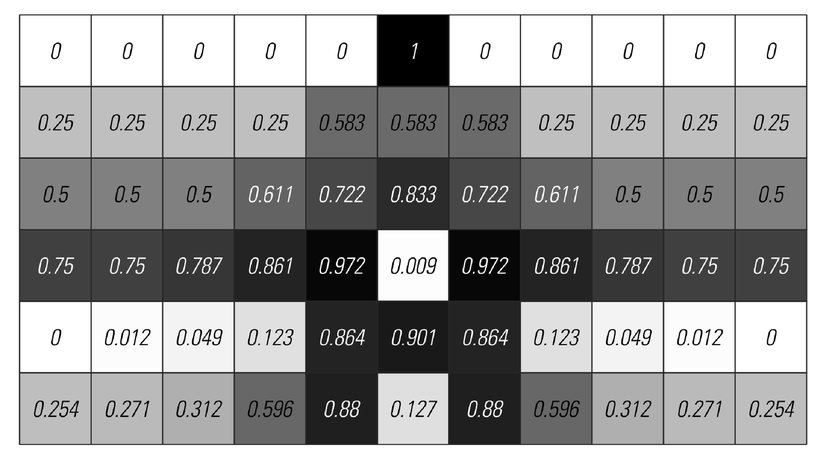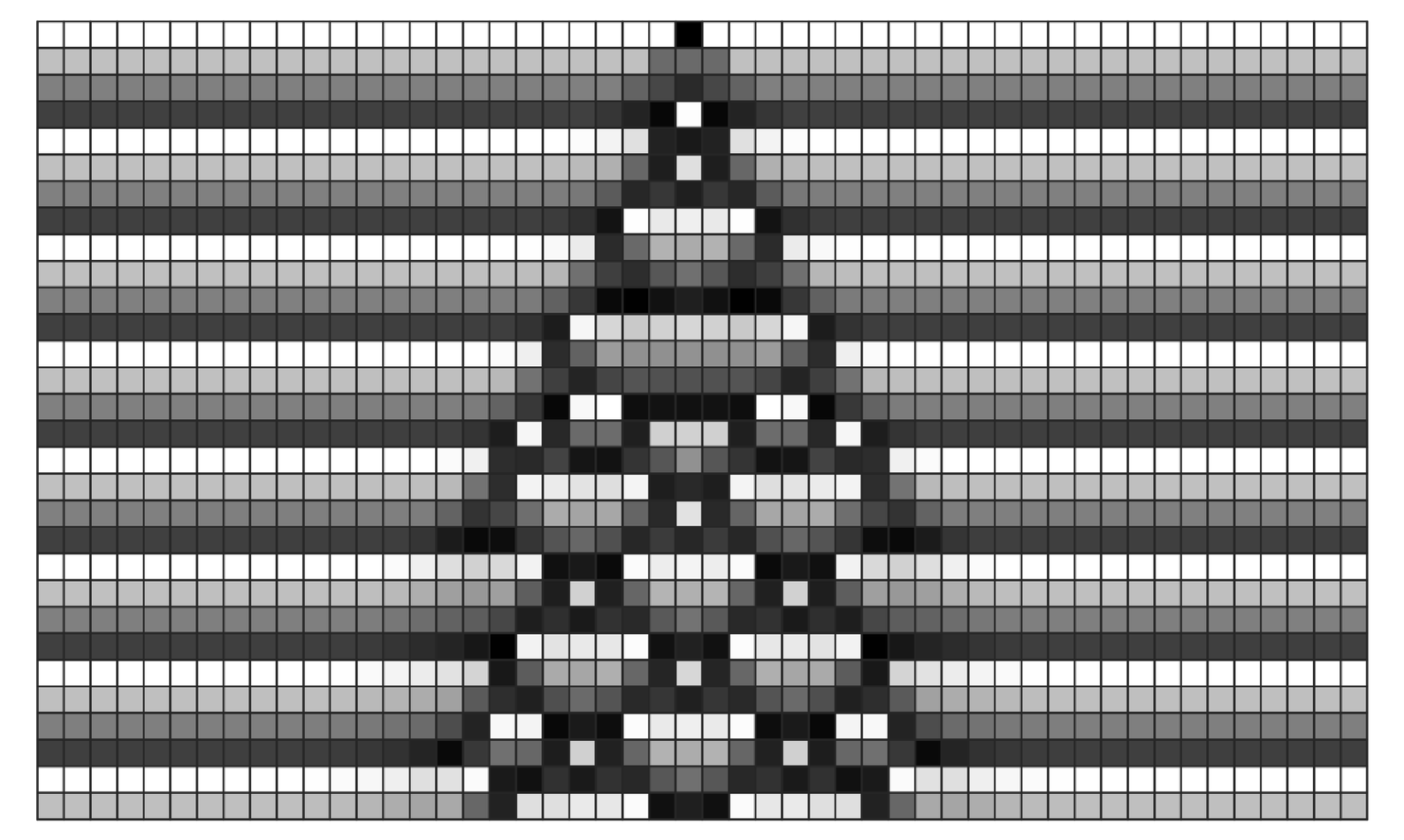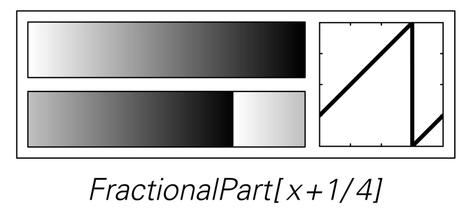In fact, it turns out that in continuous cellular automata it takes only extremely simple rules to generate behavior of considerable complexity. So as an example the picture below shows a rule that determines the new gray level for a cell by just adding the constant 1/4 to the average gray level for the cell and its immediate neighbors, and then taking the fractional part of the result.
The facing page and the one after show what happens when one chooses different values for the constant that is added. A remarkable diversity of behavior is seen. Sometimes the behavior is purely repetitive, but often it has features that seem effectively random.
And in fact, as the picture in the middle of page 160 shows, it is even possible to find cases that exhibit localized structures very much like those occasionally seen in ordinary cellular automata.
 |  |

A continuous cellular automaton whose rule adds the constant 1/4 to the average gray level for a cell and its immediate neighbors, and takes the fractional part of the result. The background simply repeats every 4 steps, but the main pattern has a complex and in many respects random form.